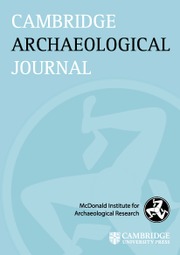Article contents
Small Signals: Comprehending the Australian Microlithic as Public Signalling
Published online by Cambridge University Press: 05 February 2021
Abstract
Signalling is a critical capacity in modern human cultures but it has often been difficult to identify and understand on lithic artefacts from pre-literate contexts. Often archaeologists have minimized the signalling role of lithic tools by arguing for strong form-function relationships that constrained signalling or else imposed ethnographic information on the archaeological patterns with the assumption they assist in defining the signalling carried out in prehistory. In this paper I present a case study for which it can be shown that function does not correlate with form and that the technology fell out of use 1000–1500 years ago. This means that neither presumptions of continuity in social practice nor reference to tool use provide strong explanations for the size, shape standardization and regional differentiation of Australian microliths. Sender-receiver signalling theory is harnessed to motivate a new synthesis of these microliths, and I demonstrate that not only were these artefacts probably key objects used in public signalling but also that sender-receiver frameworks enable us to infer details about the operation of the signalling system.
Information
- Type
- Special Section: When Materials Speak about Ontology: A Hunter-Gatherer Perspective
- Information
- Copyright
- Copyright © The Author(s), 2021. Published by Cambridge University Press on behalf of the McDonald Institute for Archaeological Research
References
- 8
- Cited by

